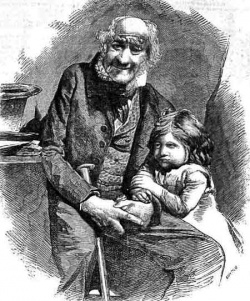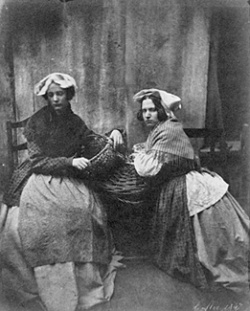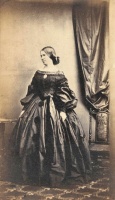“The Romans talked of an immortal memory held within the archive, and whether any archive will last for eternity or not, they understood that by building on each other’s knowledge we can create a collective memory that last generations.”
In January of 1873, the Société Jersiaise was formed by a small number of Islanders who took an interest in Jersey history, language and antiques. After the founding memberships grew quickly and their aims soon widened to include the publication of historical documents. In 1877, the Société Jersiaise realised its aim of opening a museum. The Société identified its priorities as being the practice and collection of photography which lead to them being activities which continued to be used in significant parts of the Société’s museum and library operations. From this multiple interests in photography as a method of recording research, as documentary and scientific records and as an independent art form are maintained by Société members. The Museum and the Photographic Archive are looked after by Jersey Heritage as the Société Jersiaise is not funded by the government but is a charity.

The Photographic Archive contains over 100,000 images which are dated back as far as the mid-1840s and are the principal Jersey collection of nineteenth and early twentieth-century photography. In May of 1840 photography came to Jersey which was just 9 months after it had been published in England and France, this allowed amateur and professional photographers from both sides of the English Channel as they were now allowed to practice without patents restricting them. By having access to these images of Jersey in the 1840s-present day we can see how our island has changed and how our ancestors used to live and run the island we live on now without the use of modern-day technology.
Photographic Archives don’t need to be funded by the government or be connected to a charity like the Société Jersiaise, now in the twenty-first century, we carry these archives around in our pockets on a daily. Mobile phones and other devices store our photos, texts, videos and many other things making them an archive of our own life. Another modern way we have adapted in our lives to keep images and videos is social media which allows other people from the society we live in to see what we do and where we go.

One Key photographer from the Photographic Archive is William Collie, he was probably the first photographer to use Fox Talbot’s calotype process in Jersey. In the 1840s Collie made a series of calotype portraits showing ‘French and Jersey Market Women’, with one being printed on salted paper which survives in a private collection. The Société Jersiaise Photographic Archive lists 157 photographs by William Collie, with the majority of them being portraits but there are a few Jersey scenes which are contenders for the accolade of the earliest surviving views of Jersey. The scenes feature the Church of Scotland on Midvale Road, houses on Queens Road, Gorey and Mont Orgueil Castle and a granite, thatched cottage. These were all dated between 1845-1850.

Thatched cottage, taken by William Collie 
‘Market Women’, taken by William Collie
By studying William Collie’s main collection of the ‘Market Women’ we can learn many things about how women in Jersey society looked and acted. These photos can help us imagine these women’s social status/class, what they were doing in the market and what groups would have been there during the late 1840s. Furthermore, Collie’s photographs of the Jersey Views allow us to see our Island nearly 200 years ago and how the island specifically structures in Jersey have developed and changed due to the natural environment and decay. Having these images could allow the reconstruction or redevelopment of older structures like the houses on Queens Road or the Church of Scotland that would have naturally started to ‘wither’ or ‘fall apart’ cause of their age.

I have chosen this image to analyse as I believe it is one of the more clearer photos that we have access to, most of the other images of William Collies do not contain as much intricate detail due to the age and how they have been transferred online for viewing. Having photographs that show ‘Market Women’ can help us understand what women during this time period would have worn and how clothing would have changed due to social class and their standing in society.
One thing I like about this photo is the intense detail that is shown in the two wicker baskets to which the woman sits next, this would have been difficult to achieve during the time of William Collie but by using Fox Talbot’s calotype process he was able to create a negative image which helped to highlight the different patterns and texture in the cloths, food and woven baskets. These many different textures create a shape to the photo as views are able to easily depict what they are and what they would feel and look like now. Another feature that relates to the texture I think adds personality to the photograph is the cracks in the wall which show the age of the market and how it might have been worn down due to the number of people that walk through there every day. Furthermore, I enjoy the contrast between the white, black and grey tones in the image as the darker parts of the tartan scarf stand out against the lighter grey background of the wall the woman was sitting in front of. In my opinion, I think the composition of this image complements all the features but still allows the ‘Market Woman’ to be the main viewing point, the photo seems organised and composed but you can see that the woman is comfortable and is in an environment she is used to.

By using the Société Jersiaise and the `Photographic Archives we can learn a lot about the history of our island and the historic meaning of many objects, people and buildings. Accumulating information like the Photographic Archive doesn’t just help us with looking back through time at old buildings or people it can also show us how the world was run at any period and how it has been developed. I believe that using these courses such as the Société Jersiaise can help further the education systems and allow for multiple generations to “create a collective memory” which will last centuries. For example, using the archives could give many photography students help on different projects around Jersey and the history of the Island and our ancestors.

Niamh, a well constructed essay, that clearly demonstrates that you have researched, read and thought about the essay question and the function of the archive in general. Good strategy to use an opening quote to set the scene for the essay. Equally, good use of examples to extend knowledge and understanding in selecting a key photographer, such as William Collie and some of his images of Jersey Market women. These portraits are remarkable on several levels. They are all staged in Collie’s studio using models based on his observations of ‘real’ French market women in St Helier.
For your Personal Study, consider how images or specific collections from the historical photo-archive at Societe Jersiaise may help to develop your project.
11/18 = C/B grade
Good effort – keep going!